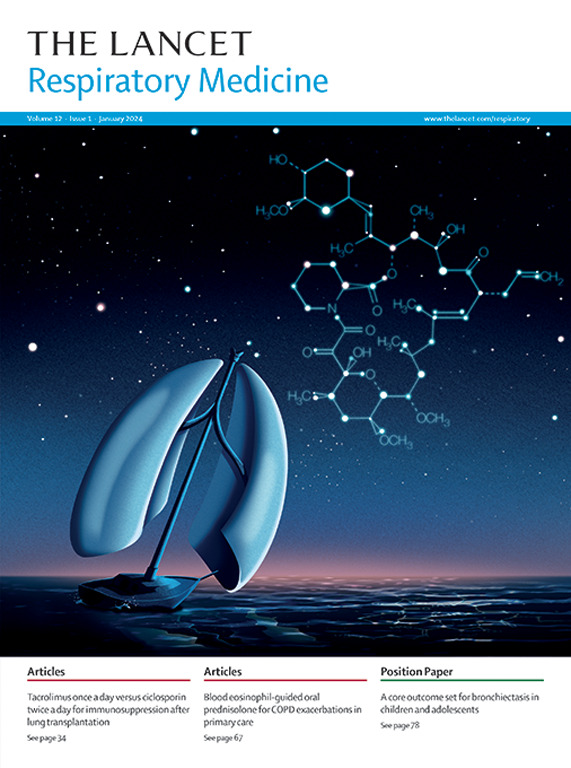最大化治疗成功的机会:顺序参与囊性纤维化核酸治疗试验
IF 32.8
1区 医学
Q1 CRITICAL CARE MEDICINE
引用次数: 0
摘要
确定针对囊性纤维化潜在病因的安全有效的治疗方法仍然是囊性纤维化社区的关键优先事项。CFTR调节剂是一流的,经监管部门批准的治疗方法,可改善CFTR基因编码的蛋白质的功能,并具有显著和持续的临床益处。尽管大约90%的囊性纤维化患者可以从这些基于遗传适性的治疗中受益,但一个关键的未满足的需求仍然存在:为超罕见的囊性纤维化患者开发CFTR导向的治疗,这些患者由于不合格或不耐受而不是CFTR调节剂的候选人。解决这一未满足的需求将取决于基于核酸的治疗(nabt)的临床进展,这一术语包括变异特异性反义寡核苷酸治疗和变异不可知论的mRNA和基于dna的基因治疗。对于那些不适合或无法服用CFTR调节剂的患者,nabt的临床开发不仅受到相对较小的目标人群的挑战,这影响了可行的试验规模,而且还受到长期安全随访的独特监管要求以及基因治疗交叉暴露或再暴露的潜在未知的短期和长期风险的挑战。本个人观点阐述了为最大化非CFTR调节剂候选人群的试验机会所需的前瞻性规划,包括在先前接触NABT后后续NABT试验参与的考虑。本文章由计算机程序翻译,如有差异,请以英文原文为准。
Maximising opportunity for therapeutic success: sequential participation in cystic fibrosis nucleic acid-based therapy trials
Identifying safe and effective therapies that target the underlying cause of cystic fibrosis remains a key priority for the cystic fibrosis community. CFTR modulators are first-in-class, regulatory-approved therapies that improve the function of the protein encoded by the CFTR gene and are associated with dramatic and sustained clinical benefits. Although approximately 90% of the population with cystic fibrosis could benefit from these therapies based on genetic eligibility, a crucial unmet need remains: developing CFTR-directed therapies for the ultra-rare population with cystic fibrosis who are not candidates for CFTR modulators due to either ineligibility or intolerance. Addressing this unmet need will depend on the clinical advancement of nucleic acid-based therapies (NABTs), a term that includes variant-specific antisense oligonucleotide therapies and variant-agnostic mRNA and DNA-based gene therapies. The clinical development of NABTs for those who are not candidates for or unable to take CFTR modulators is challenged not only by the relatively small target population, which affects feasible trial sizes, but also by unique regulatory requirements for long-term safety follow-up and the potential yet unknown short-term and long-term risks with genetic therapy cross-exposure or re-exposure. This Personal View addresses the proactive planning needed to maximise trial opportunities for the population who are not candidates for CFTR modulators, including considerations for subsequent NABT trial participation following previous NABT exposure.
求助全文
通过发布文献求助,成功后即可免费获取论文全文。
去求助
来源期刊

Lancet Respiratory Medicine
RESPIRATORY SYSTEM-RESPIRATORY SYSTEM
CiteScore
87.10
自引率
0.70%
发文量
572
期刊介绍:
The Lancet Respiratory Medicine is a renowned journal specializing in respiratory medicine and critical care. Our publication features original research that aims to advocate for change or shed light on clinical practices in the field. Additionally, we provide informative reviews on various topics related to respiratory medicine and critical care, ensuring a comprehensive coverage of the subject.
The journal covers a wide range of topics including but not limited to asthma, acute respiratory distress syndrome (ARDS), chronic obstructive pulmonary disease (COPD), tobacco control, intensive care medicine, lung cancer, cystic fibrosis, pneumonia, sarcoidosis, sepsis, mesothelioma, sleep medicine, thoracic and reconstructive surgery, tuberculosis, palliative medicine, influenza, pulmonary hypertension, pulmonary vascular disease, and respiratory infections. By encompassing such a broad spectrum of subjects, we strive to address the diverse needs and interests of our readership.
 求助内容:
求助内容: 应助结果提醒方式:
应助结果提醒方式:


